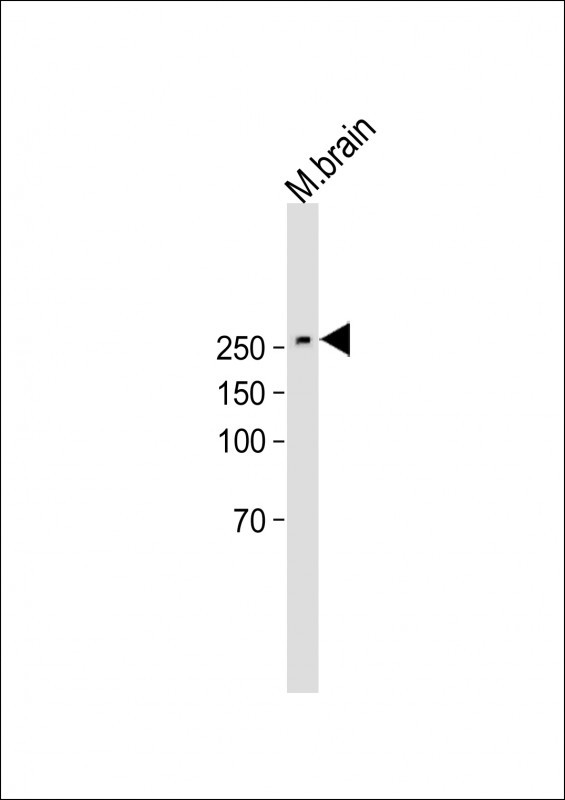
| WB | 咨询技术 | Human,Mouse,Rat |
| IF | 咨询技术 | Human,Mouse,Rat |
| IHC | 咨询技术 | Human,Mouse,Rat |
| ICC | 技术咨询 | Human,Mouse,Rat |
| FCM | 咨询技术 | Human,Mouse,Rat |
| Elisa | 咨询技术 | Human,Mouse,Rat |
| Aliases | Spectrin beta chain, non-erythrocytic 1, Beta-II spectrin, Fodrin beta chain, Spectrin, non-erythroid beta chain 1, SPTBN1, SPTB2 |
| Entrez GeneID | 6711 |
| WB Predicted band size | 274.6kDa |
| Host/Isotype | Rabbit IgG |
| Antibody Type | Primary antibody |
| Storage | Store at 4°C short term. Aliquot and store at -20°C long term. Avoid freeze/thaw cycles. |
| Species Reactivity | Human, Mouse, Rat |
| Immunogen | This SPTBN1 antibody is generated from a rabbit immunized with a KLH conjugated synthetic peptide between 2063-2097 amino acids from mouse SPTBN1. |
| Formulation | Purified antibody in PBS with 0.05% sodium azide. |
+ +
1. **"SPTBN1 mediates cytokine-induced fibrotic responses in hepatic stellate cells"**
- **作者**: Zhang et al., 2020
- **摘要**: 该研究通过免疫沉淀和Western blot技术,验证了SPTBN1抗体在肝星状细胞中的特异性,发现SPTBN1通过调控TGF-β信号通路参与肝纤维化进程。
2. **"A novel role for SPTBN1 in regulating mitotic spindle assembly"**
- **作者**: Lee et al., 2018
- **摘要**: 研究利用SPTBN1抗体进行免疫荧光染色,揭示其在细胞有丝分裂过程中对纺锤体组装的调控作用,并发现其缺失导致染色体分离异常。
3. **"SPTBN1 deficiency exacerbates Alzheimer’s disease pathology in mouse models"**
- **作者**: Wang et al., 2021
- **摘要**: 通过免疫组化分析SPTBN1在小鼠脑组织中的表达,发现其缺失会加剧β-淀粉样蛋白沉积和神经元凋亡,提示其与神经退行性疾病的相关性。
4. **"Validation of a high-specificity SPTBN1 monoclonal antibody for diagnostic applications"**
- **作者**: Chen et al., 2019
- **摘要**: 研究系统验证了一种新型SPTBN1单克隆抗体的特异性,通过siRNA敲除和质谱分析确认其适用于临床样本(如肿瘤组织)的蛋白表达检测。
(注:上述文献信息为概括性示例,实际引用请以真实文献为准。)
×